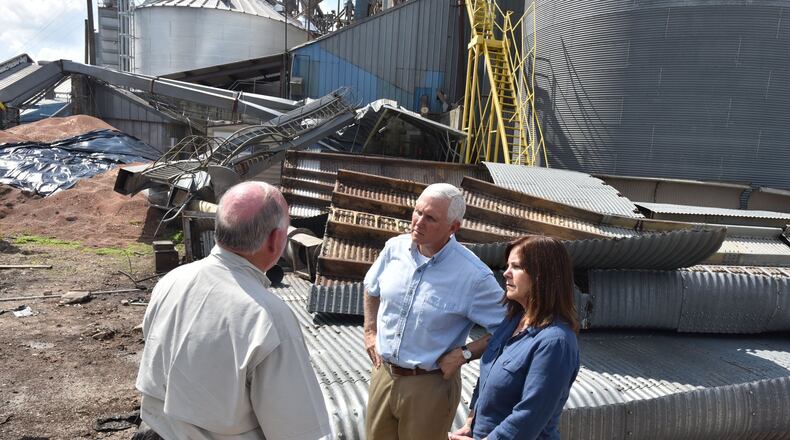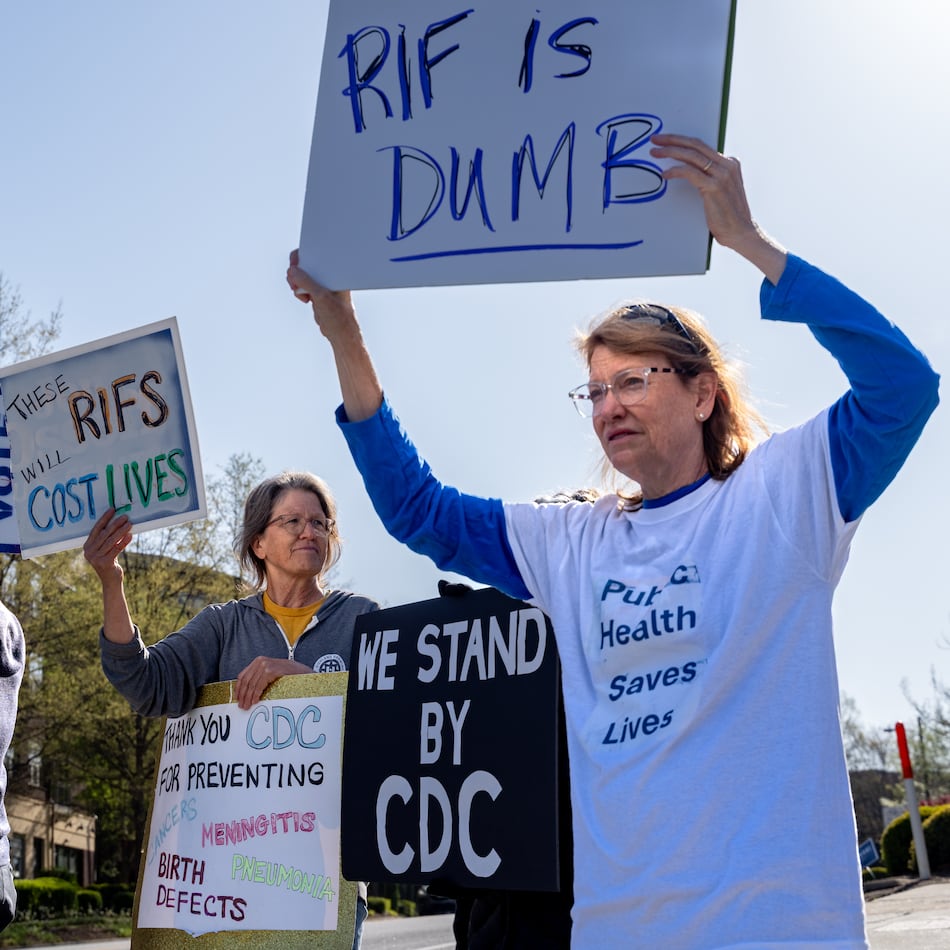Editor’s note: This article has been updated with additional details about federal financial aid.
Edward Reynolds thinks about the still-dark hours after Hurricane Michael passed.
Reynolds, the mayor of Bainbridge and also a pharmacist, couldn’t get his vehicle out of the driveway. Too many downed trees. So, gripping a flashlight, he began a two-and-a-half mile trek to check on his pharmacy.
“It was like a war zone. It was something I would never forget,” he said. He climbed over trees and edged by electric transformers lying in the road.
Not all the damage from the storm is gone. But, a year later, most of what remains is less visible. The financial toll, however, could linger for much longer.
The Category 5 monster roared ashore at Mexico Beach, Fla., on October 10, then sped more than 100 miles inland as an intact hurricane to shock South Georgia. Eleven-year-old Sarah Radney died in the living room of her grandparent's Seminole County home, hit by debris that burst through the roof. Hurricane Michael would go on to fleece the state's agriculture industry like no storm before. Georgia agriculture losses topped $2.5 billion, according to the University System of Georgia.
Battered farmers are still waiting for long-promised federal disaster aid, four months after it was finally approved by Congress and then signed by President Trump. The U.S. Department of Agriculture, led by former Georgia Gov. Sonny Perdue, now predicts it will begin distributing some of the funds by mid-month, after having to put new software in place and training staff on updated policies, a spokesperson said Wednesday.
Still, federal programs have distributed about $65 million in Georgia to individuals and businesses related to Hurricane Michael, primarily through low-interest loans, according to the Federal Emergency Management Agency. Another $50 million has been set aside to reimburse local governments and nonprofits for costs tied to the storm.
In many ways, communities in southwest Georgia have rebounded.
Many — but not all — blue tarps on rooftops in Bainbridge have been replaced with fresh shingles. Nearly 800 roof permits were granted in the city of 12,000 people. Some of the repairs were only finished in recent days.
Dead cows, escaped chickens and downed trees have long since been taken away. Gone are nine-foot-high debris piles that lined both sides of some city streets. Most of the community’s live oaks are still standing, though threatened by parched conditions that have bedeviled the area recently, the mayor said.
Other challenges remain.
In Seminole County, a largely rural and poor community, overall assessed values for real estate and personal property have fallen for the first time in at least six years, creating pressure to raise tax rates. The more than $11 million decline in values compared to a year ago is due to the hurricane, with some homes still damaged and even unlivable, according to Anne Grice, the county’s chief appraiser. Houseboats on a local lake were among the casualties.
Southwest Georgia has some of the poorest counties in the state. Insurance covered some — but not all — damage. People dug into savings, borrowed from institutions or family, or were forced to let the damage sit as they looked for alternatives. Others have money lined up but are still waiting for contractors to get to them.
Some of the most severe problems are facing people in agriculture, a crucial industry for the state.
“We are still reeling from the effects of Hurricane Michael,” said Gerald Long, the president of the Georgia Farm Bureau.
“It is still having a lot of effect on us mentally, financially trying to get over it and move forward,” he added later.
The toll was particularly heavy on cotton, pecans, timber, vegetables and poultry. Pecan farms, which lost thousands of trees, are likely to take the longest to recover. It can take more than a decade to get new trees to produce a profit. Agriculture economist John McKissick recently told state legislators that Georgia likely won’t regain its spot as the nation’s top pecan-producing state for years.
Local officials praise the efforts of the area's Republican and Democrat politicians in Washington D.C. for pressing to eventually win approval of a special federal aid package tied to Hurricane Michael and other disasters. Last month, the USDA started accepting farmers' applications for a portion of the as-yet undistributed money.
The state moved far faster. Legislators and the governor approved $75 million in low-interest agriculture loans, and the Georgia Department of Agriculture quickly distributed it.
Still, aging farmers have had to load up on debt and use long paid-off property as collateral as they attempt to keep their operations going. Some who counted on farm or timber land to act as a sort of 401(k) now have less ability to use those assets, said 71-year-old Long, who also suffered significant losses on his Decatur County farm.
Meanwhile, many farm irrigation systems have yet to be fixed, which means crop yields could be significantly diminished from what they otherwise would have been.
Georgia farmers are still dealing with other pain: losses from difficult weather last year and in 2017, drought in recent months, intense international competition, depressed prices and bruising tariffs that slashed China as one of Georgia's most lucrative markets. Federal aid has helped in some cases, including compensating for earlier tariff pressures.
Many farmers remain in a “very compromised position” financially, state agriculture commissioner Gary Black told The Atlanta Journal-Constitution.
He asked for nearly $750 million for federal block grants to divvy out locally. Georgia isn’t likely to get that much, but Black expressed hope federal officials will come through with some and soon. He said he has repeatedly reminded federal officials of how much time has passed.
As Georgia storms go, Michael “is the most significant agriculture loss we have ever experienced,” he said.
Long said it will take three or four more years before his cattle operation returns to the kind of productivity he had before the hurricane. Sam Watson, a state legislator and vegetable producer in Colquitt County, said he suffered crop losses unlike anything before. It’s only because his cabbage crop did well that he wasn’t forced out of farming.
And in Thomas County, 55-year-old Ken Hickey was still trying to rebound from Hurricane Irma in 2017 when Hurricane Michael devastated his cotton crop. He now worries about having taken on more than $650,000 in extra debt.
“We have lost money in the last two years,” he said. “I mean a lot of money.”
He’s gotten some insurance money and federal dollars to compensate for tariff damages. But he’s on a waiting list to get Hurricane Michael federal disaster aid for farmers.
In Bainbridge, meanwhile, residents will soon mark another sign of a return to normalcy.
Last year in the wake of the storm, city leaders canceled door-to-door trick or treating. They feared the mountains of debris would endanger children navigating through neighbors’ yards.
Instead, thousands of people lined up for a trunk-or-treat gathering organized at a local park last year to compensate for the door-to-door ban. It reinforced the sense of community at a critical time. Now, it’s slated to become an annual event.
“We have come a long way,” the mayor said.
About the Author
The Latest
Featured



